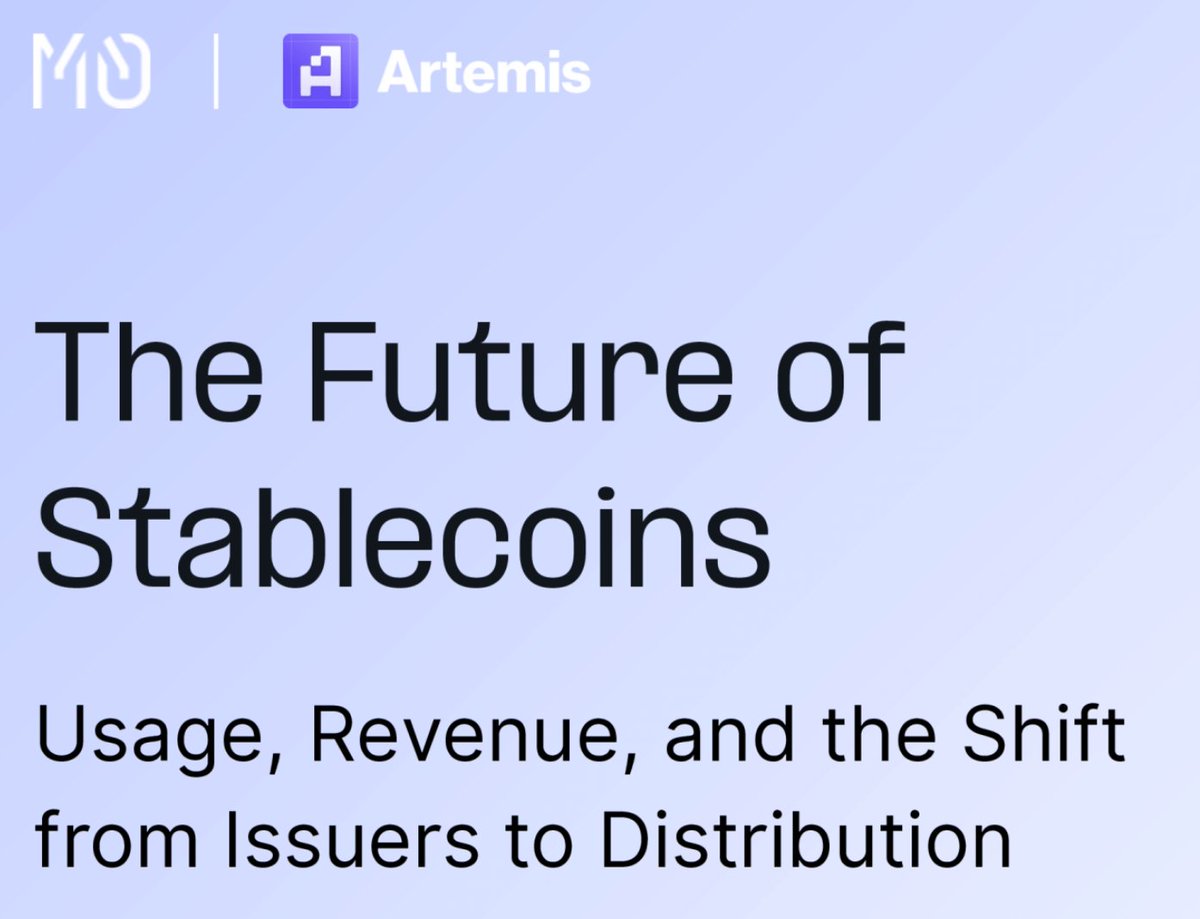Most people think they understand stablecoin adoption because they see "$240 billion market cap" and "$3.1 trillion volume."
They don't.
I just finished @m0foundation 's x @artemis new stablecoin report, and the most shocking insights have nothing to do with those headline numbers.
What's actually happening:
1. The issuer is now paying the distributor. Circle paid $900 million to Coinbase and other distributors in 2023. That's over half their revenue—handed over to get people to use USDC.
2. The volume metrics everyone quotes are misleading. 31% of that "$3.1 trillion in annual volume" comes from MEV bots recycling the same capital thousands of times per day. Real human usage is a fraction of what the headlines suggest.
3. There's a massive wealth concentration nobody talks about. 150 million stablecoin wallets exist, but 99% hold under $10,000 while just 20,000 mystery wallets control $76 billion—32% of total supply. These aren't exchanges or DeFi protocols. The report calls this the "gray space" and admits they don't know what it represents.
4. The real explosion happened in the last six months. DeFi stablecoin volumes grew from $100B to $600B since summer. Meanwhile, memecoin trading alone generated $500B in stablecoin flow—12% of annual volume.
5. We're measuring success completely backwards. TVL dropping might actually indicate better technology, not declining usage. Rising volume might just mean more bot activity. Every metric we use to track adoption is fundamentally broken.
While everyone debates USDC vs USDT market share, the real transformation is happening at the distribution level.
As M0 puts it: "The days of jaw-dropping profits at the issuer level are numbered."
This report changed how I think about stablecoin adoption and offered a refreshing perspective.
Link to the full report: docsend.com/view/vy9ttpq3h… —essential reading if you want to understand what's actually driving this market.
They don't.
I just finished @m0foundation 's x @artemis new stablecoin report, and the most shocking insights have nothing to do with those headline numbers.
What's actually happening:
1. The issuer is now paying the distributor. Circle paid $900 million to Coinbase and other distributors in 2023. That's over half their revenue—handed over to get people to use USDC.
2. The volume metrics everyone quotes are misleading. 31% of that "$3.1 trillion in annual volume" comes from MEV bots recycling the same capital thousands of times per day. Real human usage is a fraction of what the headlines suggest.
3. There's a massive wealth concentration nobody talks about. 150 million stablecoin wallets exist, but 99% hold under $10,000 while just 20,000 mystery wallets control $76 billion—32% of total supply. These aren't exchanges or DeFi protocols. The report calls this the "gray space" and admits they don't know what it represents.
4. The real explosion happened in the last six months. DeFi stablecoin volumes grew from $100B to $600B since summer. Meanwhile, memecoin trading alone generated $500B in stablecoin flow—12% of annual volume.
5. We're measuring success completely backwards. TVL dropping might actually indicate better technology, not declining usage. Rising volume might just mean more bot activity. Every metric we use to track adoption is fundamentally broken.
While everyone debates USDC vs USDT market share, the real transformation is happening at the distribution level.
As M0 puts it: "The days of jaw-dropping profits at the issuer level are numbered."
This report changed how I think about stablecoin adoption and offered a refreshing perspective.
Link to the full report: docsend.com/view/vy9ttpq3h… —essential reading if you want to understand what's actually driving this market.

• • •
Missing some Tweet in this thread? You can try to
force a refresh




